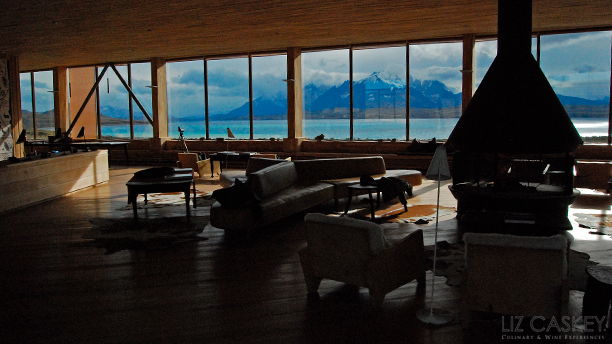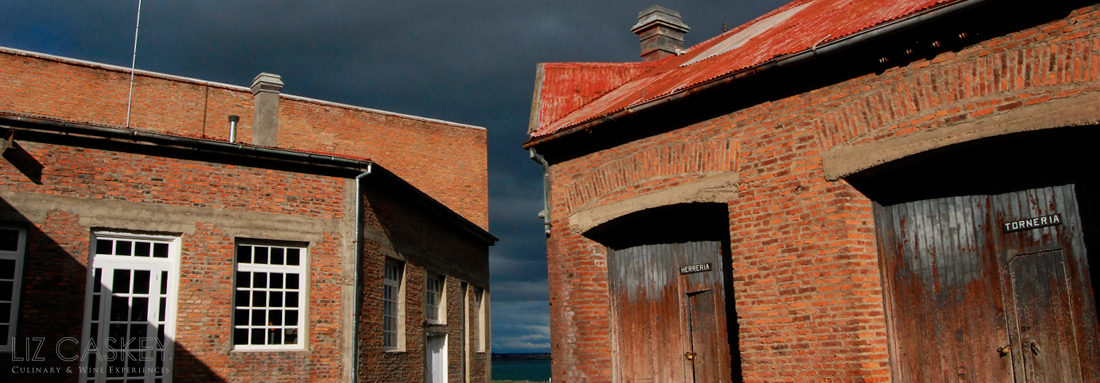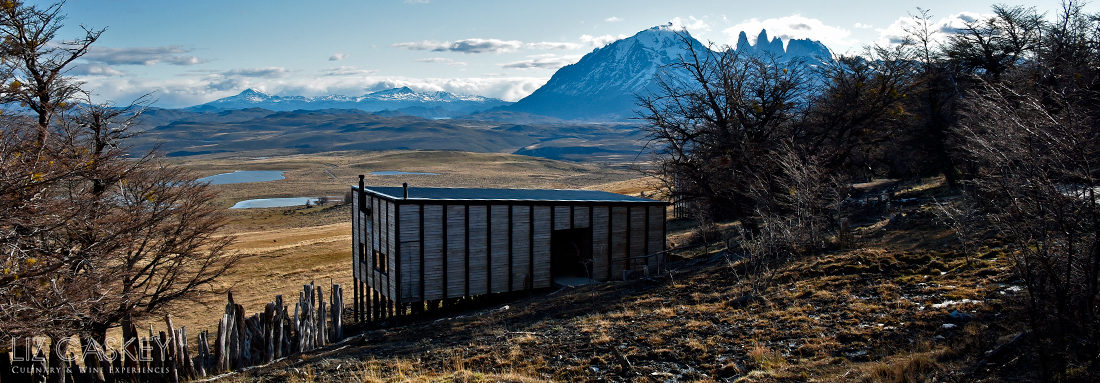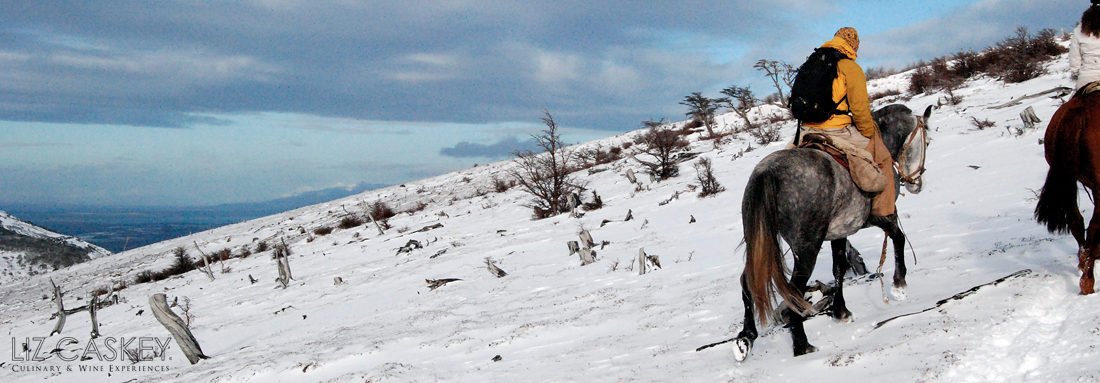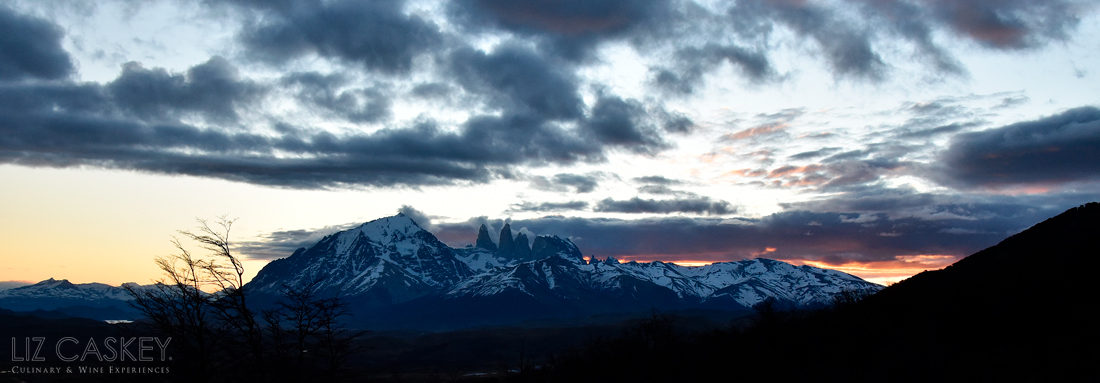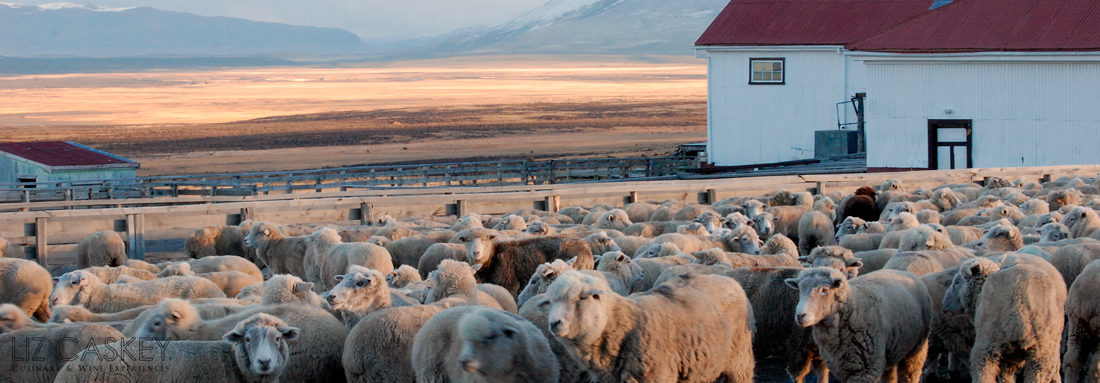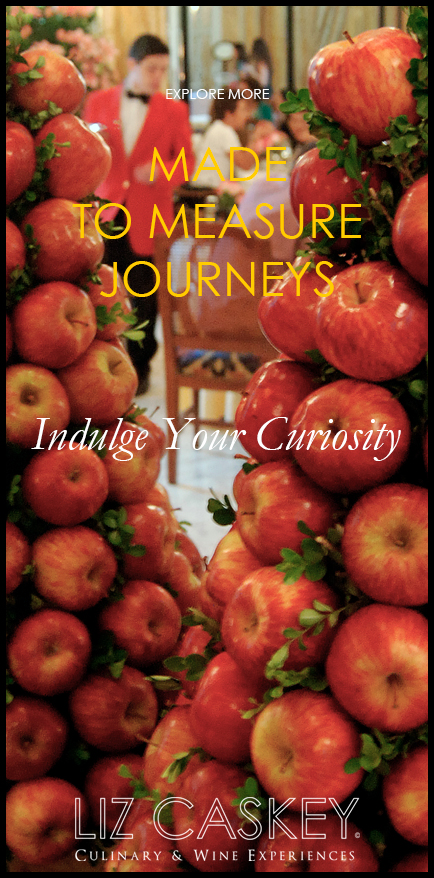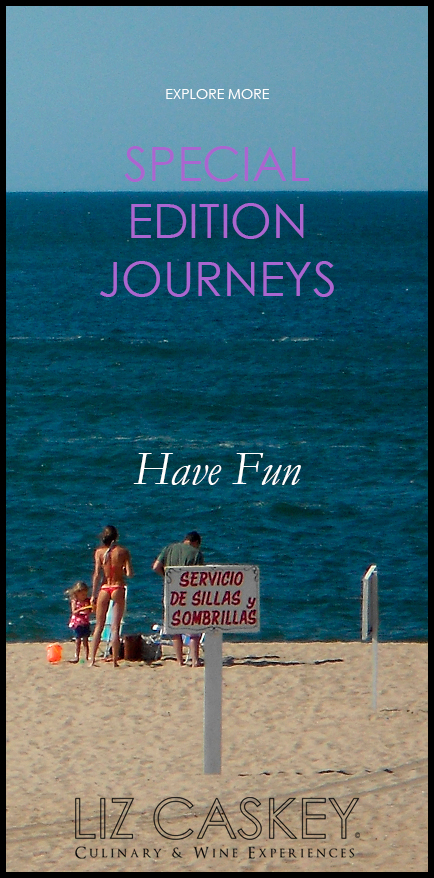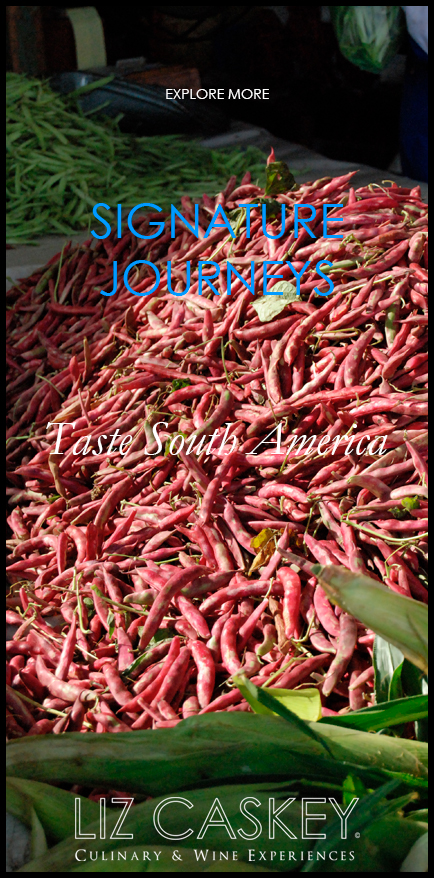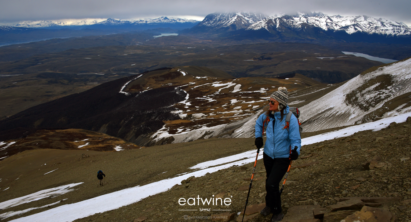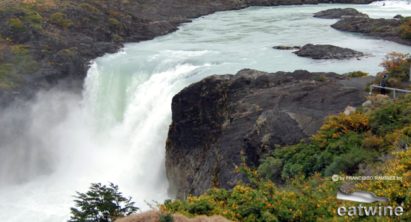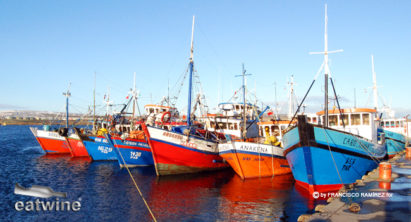Patagonia
The end of the American continent where the Andes, sea, and glaciers collide by tectonic forces. It’s a dreamy landscape of fjords, glaciers, rivers, mountains and golden grasslands; an outdoor paradise to trek, kayak, climb, and gallop.
The power of Mother Nature is so palatable in this part of the world. It bedazzles at every turn. The constant whispering of the wind and the most pristine air your lungs will ever take in. There’s the excitement of a snow squall, only to be chased away minutes later with blue skies and a rainbow. It’s the thundering of the Pehoe Falls and the deafening silence at the base of the huge granite towers, the Torres del Paine. It’s the soft light where the golden hour lasts for hours. It’s nature in all her grandiose. Wild and untamed. Wise and knowing. It gives pause and perspective.
Patagonia is not just a place–it’s a state of mind.
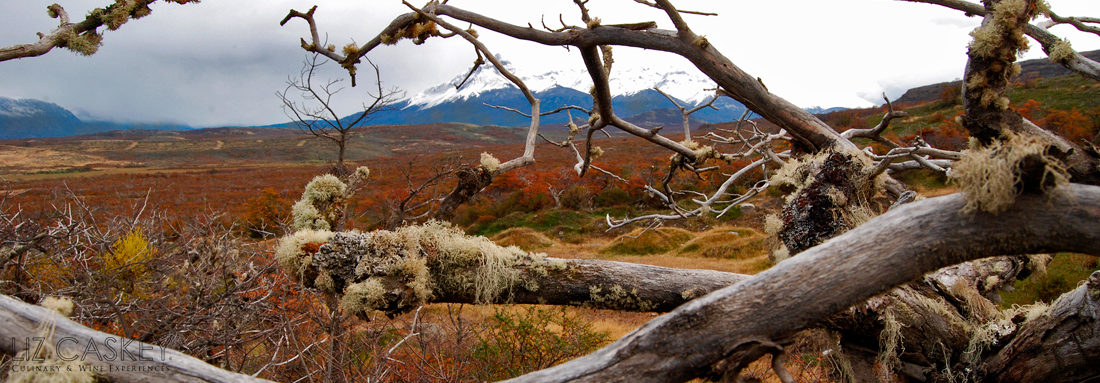
Ingredients
Torres del Paine is Chile’s national park gem and the focal point of Patagonia in the southernmost Magallanes province. Part of Unesco’s Biosphere Reserve system since 1978, the landscape is postcard perfect jagged mountains veiled in clouds, electric-blue glaciers, emerald-colored lakes with icebergs, and ancient lenga forests covered with pastel-green moss. Then there’s the windblown Prairie land called the estepa where trees grow sideways from the incessant wind and hundreds of thousands of sheep graze munch on the yellow-colored coirón grass. Condors are often sighted and maybe you may get lucky to spot a Puma from afar–or see their tracks in fresh snow.
Things We Love
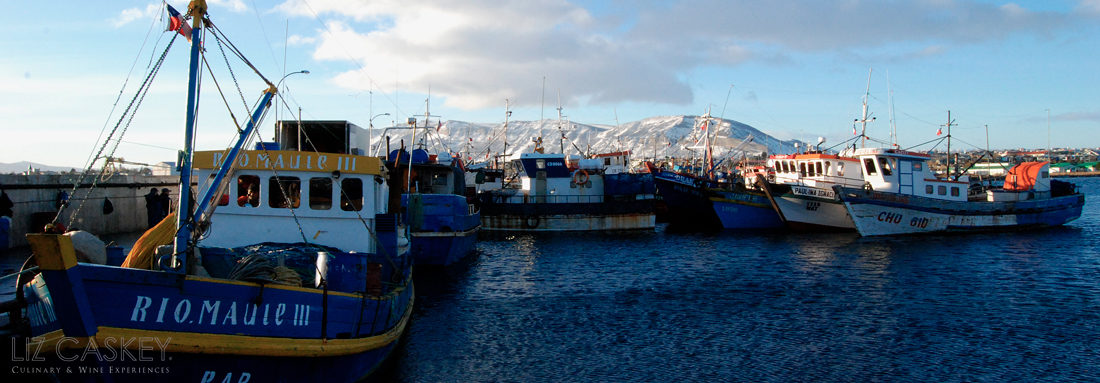
Giddy Up: Estancias are an integral part of life in Patagonia and no figure is more present than El Baqueano. The “Gaucho” of Chilean Patagonia, he’s the gatekeeper on horseback to the region, and hearty enough to endure its cold, unpredictable climate. If you are a horse lover, don’t miss riding while in Patagonia. The gentle criolla horses are easy going and time with the baqueanos precious–they are a sort of icon yet enigma. Usually men of few words, they are quiet and attuned to their surroundings. However, when asked, they will generously share their vault of knowledge about the region and nature.
Hipster Puerto Natales: Once called Chilean Utopia, this little pioneer town on the Fjord of Last Hope has an outdoorsy, young, funky vibe. The food scene is kicking with restaurants from wood-fired pizzerias to sublime African-Chilean cuisine, king crab galore, a local chocolatier, an Englishman making fine gin, and a craft brewery-cum-bar. Just outside town, too, you have the outstanding The Singular Patagonia which is not only a hotel–the historic monument’s restaurant is open to the public, too.
Indigenous Foodstuffs: In these latitudes, the environment is harsh with the “warm” growing months short at best, even with a greenhouse on hand. That hasn’t stopped the creative young chefs at the lodges and in the nearby town of Puerto Natales from creating a whole new Patagonian cuisine. The stars are numerous: king crab, sea urchins, Patagonian hake, and scallops from the icy fjords. In the spring, foragers head out to find pan de indio, a type of fungi made into pickles and ceviches. There’s the tender lamb, calafate berries, the wild game (hare and guanaco), sheep’s milk cheeses, and a talented local grower who is the source of the fresh greens and organic produce for much of the area. Elemental and pure, we love the cuisine in the region.
and the meaningful
Hotels

Awasi Patagonia
Secluded in a pristine corner of the Chilean Patagonia with direct views of the Torres del Paine, Awasi Patagonia is situated on a 15,000-acre reserve protected from the winds by acres native forest. Here, guanacos, rheas, foxes, condors and pumas roam in the majestic nature. The independent villas have clean lines blending unobtrusively into the landscape with large picture frame windows and views of the granite towers from every vantage point. Inside, it’s all about coziness with sheepskin-topped sofas, a roaring fireplace, and a private hot tub to fire up with champagne after a hard hike. During the day, gear up for adventure with your private guide and 4x4 to bike, kayak, ride and explore this remote area of Patagonia--all tailor-made to your interests and fitness level. At the end of the day, return to your warm, cozy refuge to be indulged by the resident chef in an exquisite tasting menu and some of Chile’s finest wines in the main lodge.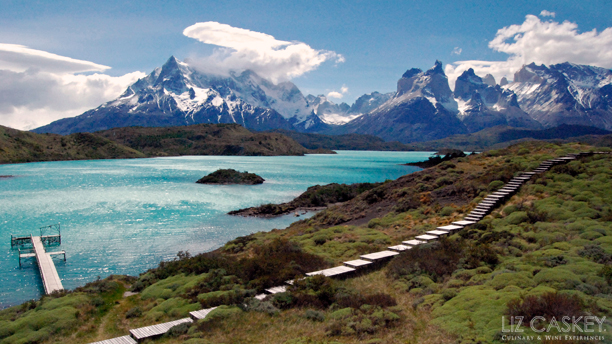
Explora Patagonia
With a primo location inside the Torres del Paine national park overlooking the turquoise Pehoé lake, vistas of the serrated peaks of the Cuernos del Paine will quickly become “common” when basing here. The park’s pristine wilderness is literally out your front door so each day begins on horseback, by foot, by boat or kayak. Take Explora’s private boat out to Grey glacier or hike up into the stunningly beautiful but hard-to-access French Valley.The park is teeming with condors, foxes, pumas, and graceful condors. Back at the hotel, admire the handsome native lenga hardwood floors and stunning views of the Macizo Paine--even from your bathroom! We love their Patagonian-style asado, lamb barbeque, with lemony Pisco Sours, of course.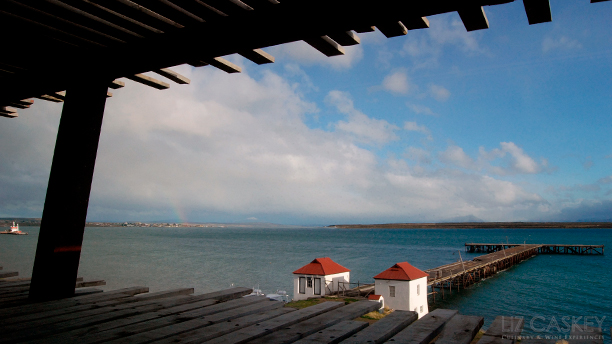
The Singular Patagonia
Located in the historic Puerto Bories on the shores of the Last Hope Fjord, this historical monument originally built in 1915 has been expertly “recycled” using environmentally friendly architecture to transform the old frigorífico, cold-storage space, into this sleek hotel. Tall ceilings, large picture windows, and warm light stream into the space and fill it with warmth and coziness, reflected in its cushy furniture and leather armchairs, inviting you to linger over your Cabernet Sauvignon and a book. Set off into the Patagonian outback to two of their private nature reserves for spectacular treks; or sail the fjords on their private boat to the Balmaceda and Serrano glaciers. The fresh cuisine is outstanding, sourcing from local seafood and wild game, organic vegetables, and a wine list touting many of Chile’s finest wines.